Dry, desert gardens can be difficult to grow plants in, and if you opt to grow standard garden plants like petunias, impatiens, and turf grass in these spaces, you will waste a lot of water and money too! However, ingenious gardening professionals have been hard at work figuring out ways to reduce watering needs and make arid gardens more eco-friendly. And one of the best solutions has been the development of xeriscaping, which makes smart use of water-wise gardening practices.
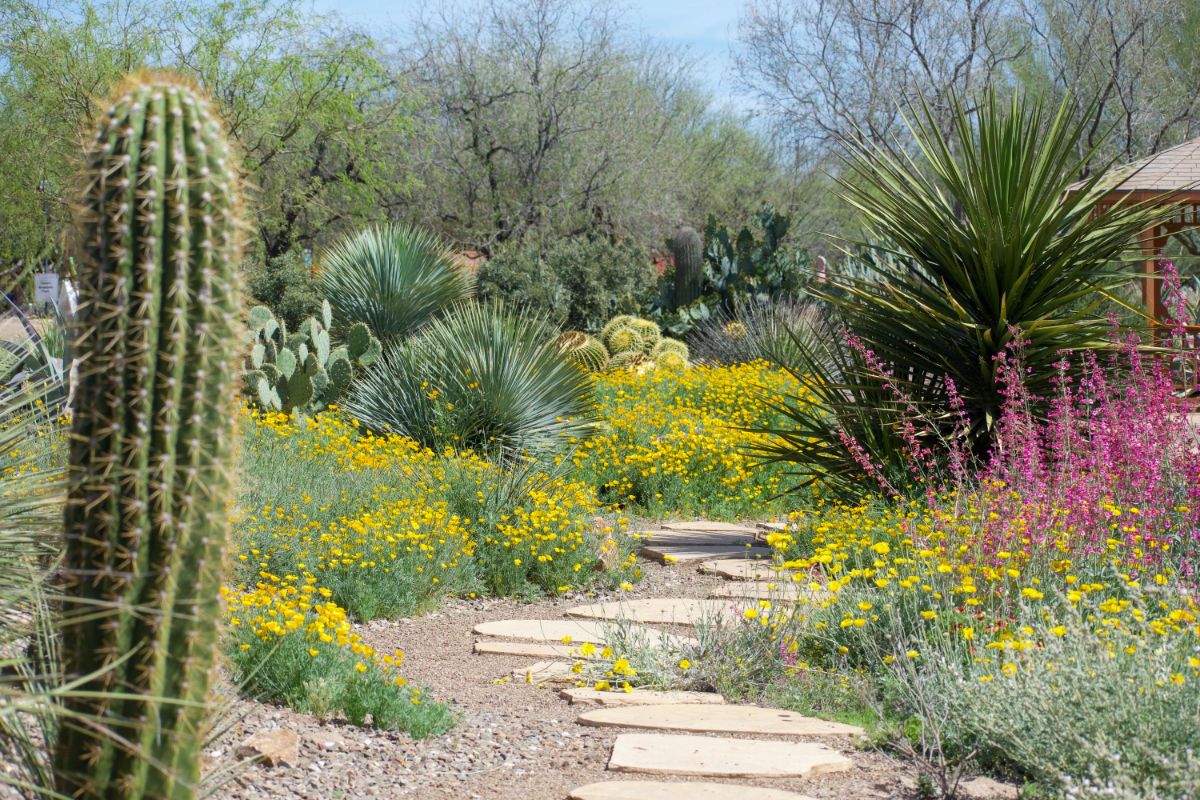
In this guide, we’ll introduce you to the basics of xeriscaping and also provide you with some plant suggestions that will grow in a low-water garden. And if you think you’ll only find succulents and cacti in this guide, think again because the list below contains some non-traditional desert plants too!
Jump to:
- What is xeriscaping?
- 16 best desert plants to grow in a xeriscape garden
- 1. Hen and chicks (Sempervivum tectorum)
- 2. Prickly pear cactus (Opuntia spp.)
- 3. Sedum (Sedum spp.)
- 4. Century plant (Agave americana)
- 5. Aloe (Aloe spp.)
- 6. Pink fairy duster (Calliandra eriophylla)
- 7. Adam’s needle (Yucca filamentosa)
- 8. Peruvian apple cactus (Cereus repandus)
- 9. Black rose tree houseleek (Aeonium Arboreum 'Zwartkop')
- 10. Bitterroot (Lewisiaspp.)
- 11. Wax agave (Echeveria agavoides)
- 12. Candelabra cactus (Euphorbia ingens)
- 13. Curve leaf yucca (Yucca gloriosa var. tristis)
- 14. Ice plants (Delosperma spp. or Lampranthusspp.)
- 15. Barrel cactus (Echinocactus grusonii)
- 16. Desert willow (Chilopsis linearis)
- Frequently asked questions
- Summary
What is xeriscaping?
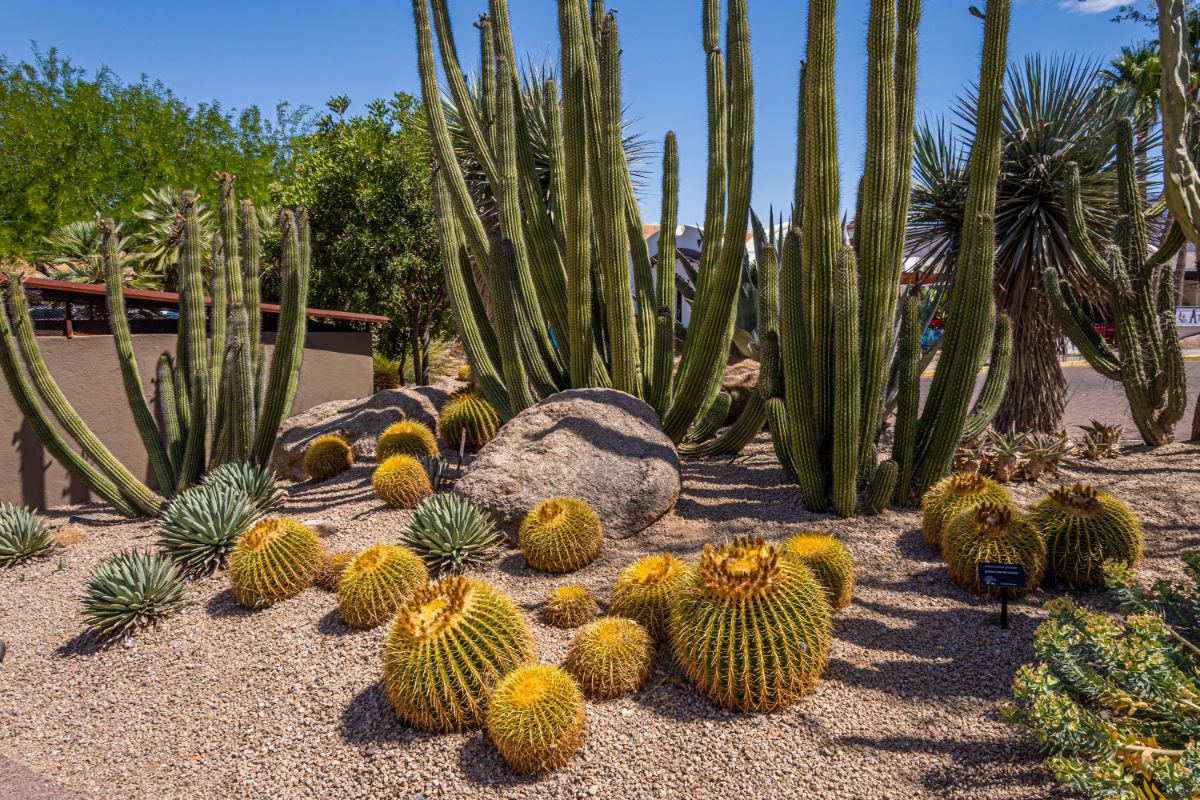
Xeriscape gardens are designed with water savings in mind. These landscape settings use smart watering practices, hardscape elements, and drought-tolerant plants to slash water usage and keep plant content even in areas with minimal rainfall.
Often, xeriscaping practices are used in desert regions, but you can also use the principles of xeriscaping in standard garden beds. Choosing native plants with low water needs is one easy way to reduce watering in your garden. Drip irrigation systems set on an automatic timer, mulching bare soil, and swapping out grass for alternative lawn coverings are other basic xeriscaping elements that can be included in any garden.
16 best desert plants to grow in a xeriscape garden
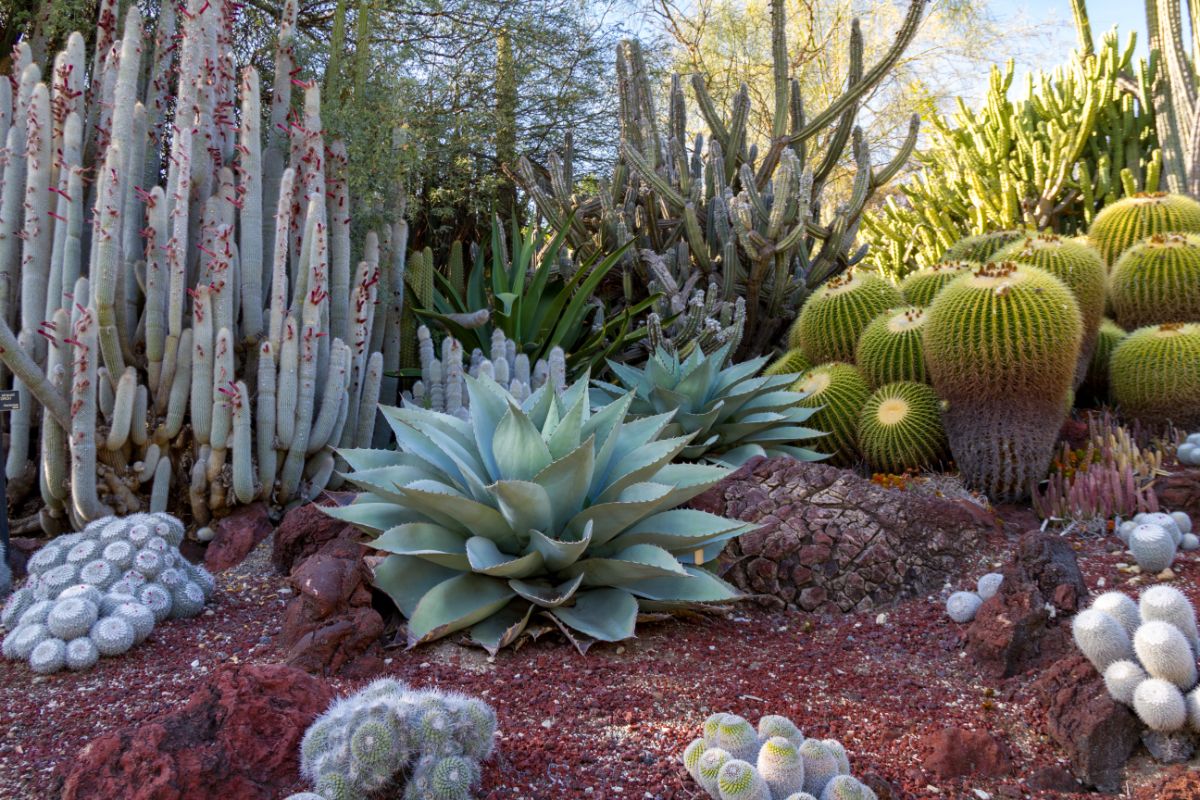
When most people think of xeriscapes, they picture a desert oasis with cacti and succulents. But many other plants with low watering needs can also be included in xeriscapes to add color and variety while still keeping garden beds as no fuss as possible. Here are a few of our favorite plants for xeriscapes, but feel free to explore other low-water plants before you start growing!
1. Hen and chicks (Sempervivum tectorum)
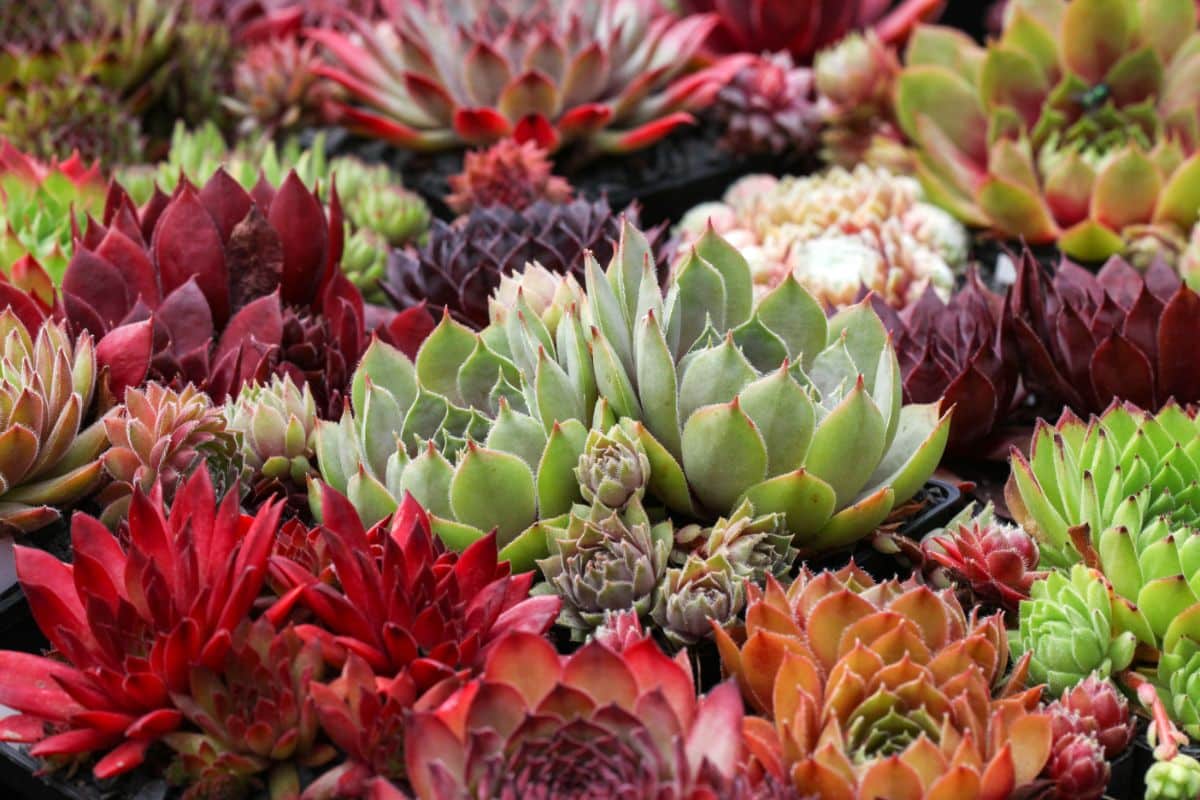
| Plant Name: | Hen and chicks |
| Light Requirements: | Full sun |
| Water Requirements: | Low |
| Growing Zone: | Zones 3 to 9 |
| Special Features: | Drought tolerant; Groundcover |
Most standard landscaping plants will struggle in a scorching hot desert garden, but not resilient hen and chicks. A true survivor, hen and chicks is a hardy succulent with tight-knit rosettes of fleshy, pointed leaves that are said to resemble a mother hen sheltering her babies. Also known as “houseleeks,” hen and chicks can be grown in garden beds or planters, depending on your landscape design.
As a drought-tolerant plant, hen and chicks thrive in hot and arid conditions, but these succulents are adaptable enough to grow in chilly zone 3 as well! With their moisture-retaining leaves and remarkably low water requirements, keeping hen and chicks is a great way to cut down on your garden chores and make your desert garden more eco-friendly. Plus, these plants come in tons of captivating colors that will brighten up any bed in a xeriscape garden.
2. Prickly pear cactus (Opuntia spp.)
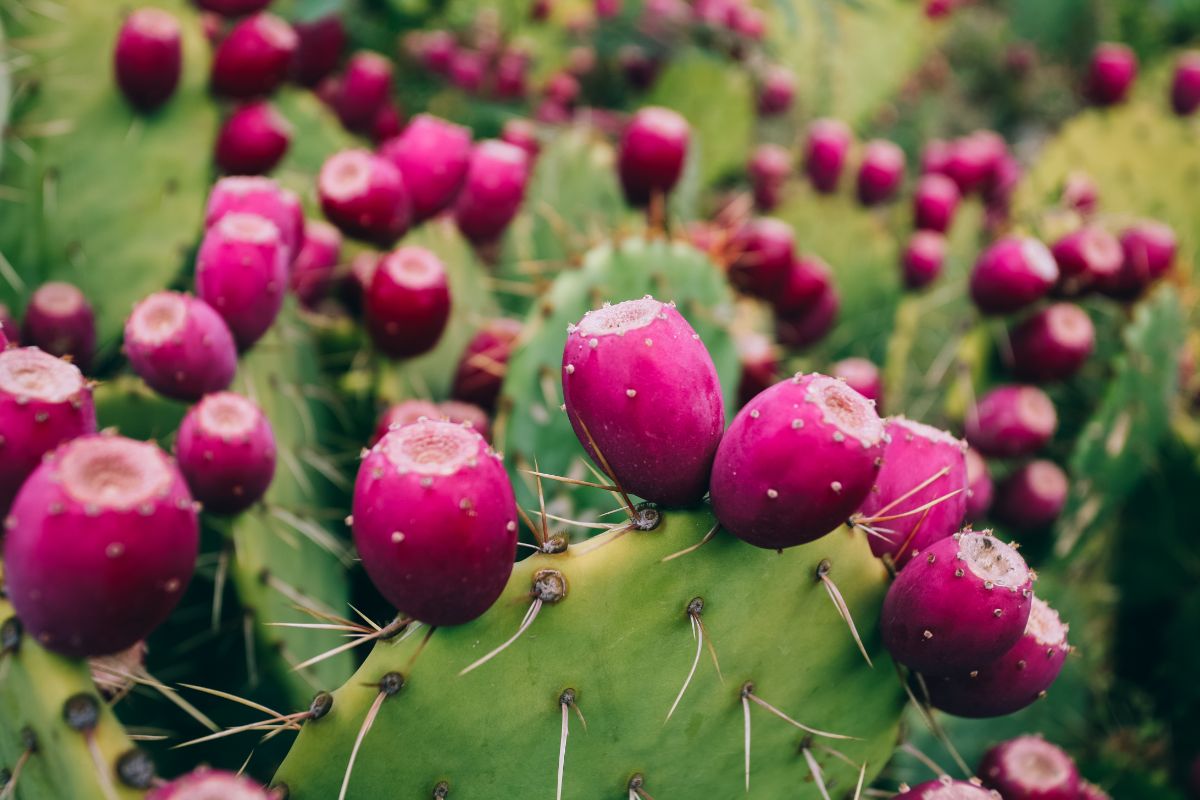
| Plant Name: | Prickly pear cactus |
| Light Requirements: | Full sun |
| Water Requirements: | Low |
| Growing Zone: | Zones 3 to 11 |
| Special Features: | Drought tolerant; Edible fruit |
Desert gardens can be unforgiving places, and most plants will need to be watered often to survive, but prickly pear cacti can handle xeriscape spaces with ease. These resilient cacti are well known for their iconic paddle-shaped pads, which happen to be edible if you remove the prickles! However, prickly pears also yield edible fruit that makes a tasty and nutritious addition to smoothies and other recipes.
Beyond their strong outlines and easygoing nature, prickly pears are emblems of adaptability and tolerance. Plus, they boast colorful flowers that emerge in spring to early summer and serve as an important food source for bees and other pollinators. Impressively drought tolerant, prickly pears can quickly absorb any available moisture with their shallow root system, and then plants store excess water in their fleshy paddles until it rains again!
3. Sedum (Sedum spp.)
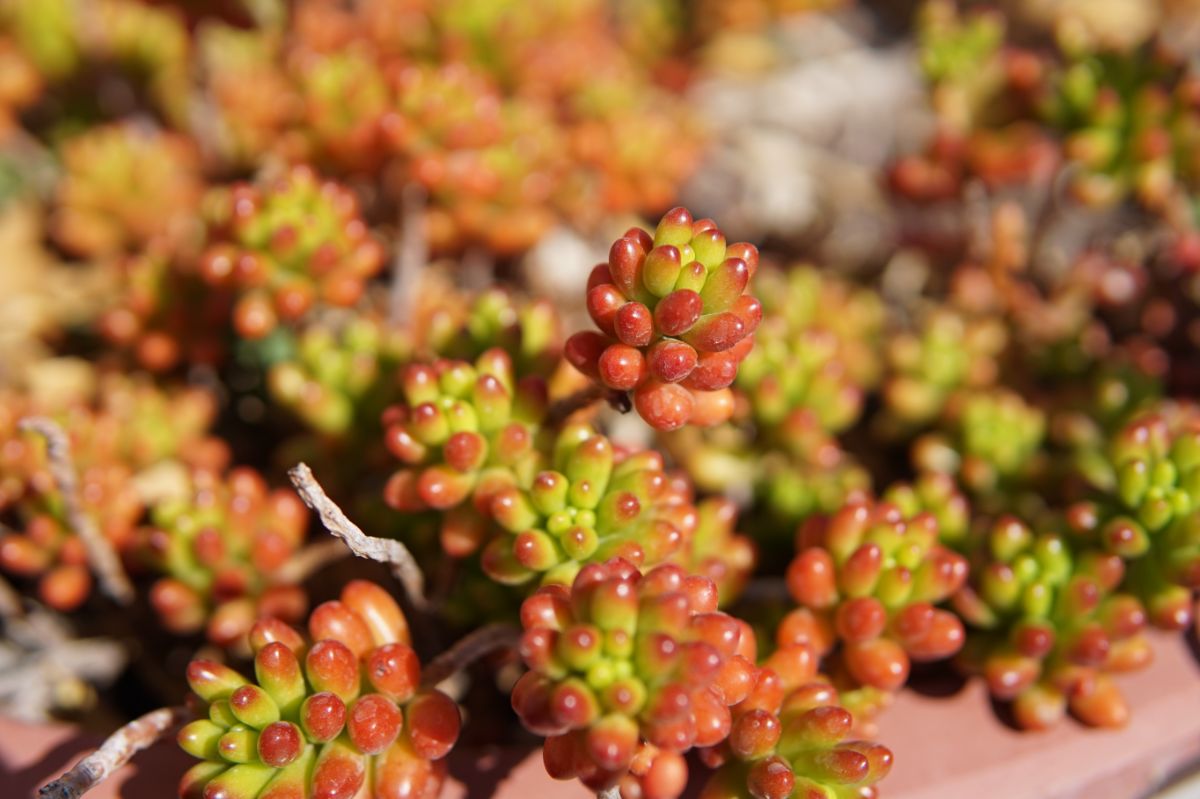
| Plant Name: | Sedum |
| Light Requirements: | Full sun |
| Water Requirements: | Moderate to low |
| Growing Zone: | Zones 3 to 9 |
| Special Features: | Groundcover; Attracts pollinators |
When it comes to drought-tolerant plants for xeriscape gardens, the sedum family is hard to beat. These versatile succulents come in a veritable tapestry of colors, and you can choose between low-growing groundcover sedums or upright showstoppers. Highly adaptable to dry soils, sedums have an impressive cold tolerance, too, and they can be grown in zones 3 to 11.
While there are many sedum varieties to choose from, 'Autumn Joy' is one of the most popular. This crowd-pleaser boasts blueish-green, fleshy leaves and big, flat-topped blooms that appear in late summer and last well into autumn. In fact, you can leave ‘Autumn Joy’ flowers intact through the winter months for extra winter interest.
4. Century plant (Agave americana)
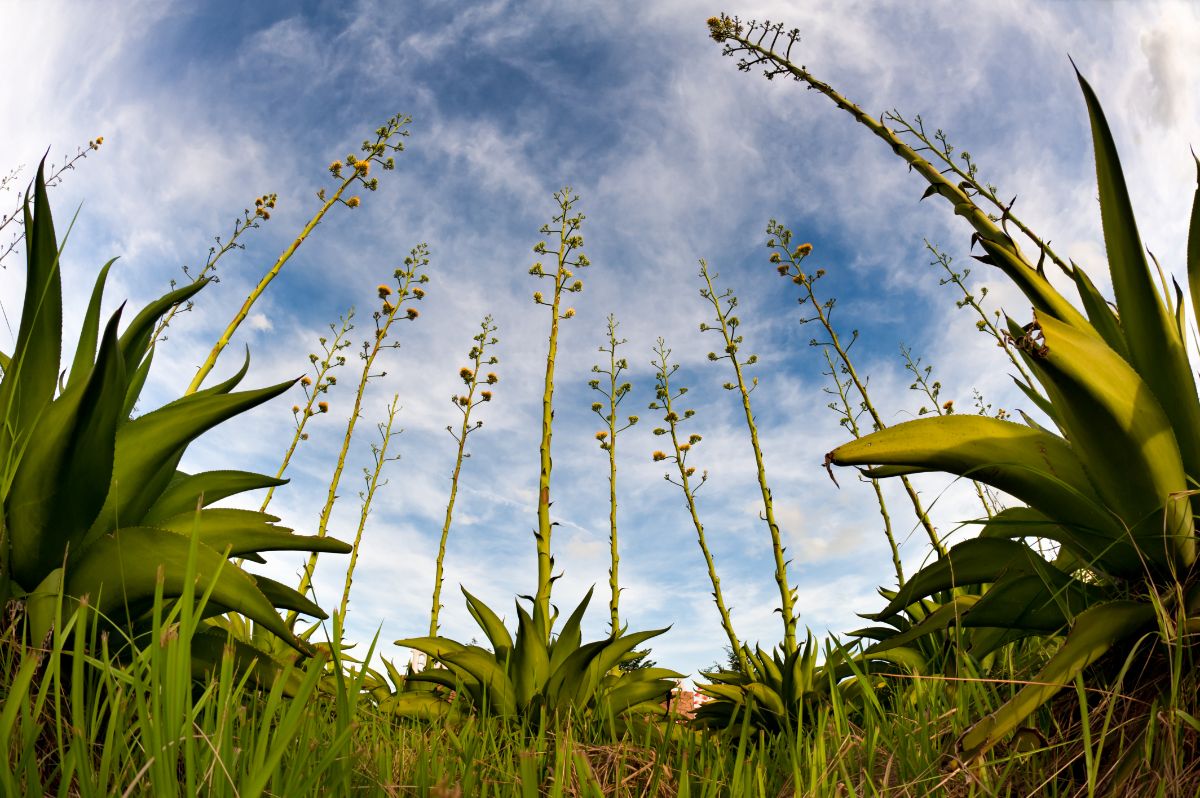
| Plant Name: | Century plant |
| Light Requirements: | Full sun |
| Water Requirements: | Low |
| Growing Zone: | Zones 8 to 11 |
| Special Features: | Drought tolerant; Strong silhouette |
An emblem of enduring grace and beauty, there are few plants as striking as the majestic century plant. This noteworthy succulent is a type of agave, and its strong silhouette adds intriguing lines to garden beds while its bluish-green leaves are pleasing as well. That said, century plants aren’t quite as cold-hardy as some of the other plants on this list, but they will be unbothered by sun-baked landscapes!
Century plants are named for the fact that gardeners once believed these plants only bloom every 100 years; however, century plants actually bloom about once every 25 years. After blooming, century plants will die back, but they often produce pups or new plants before they do. If you want to add a touch of desert elegance to your garden, the century plant may be just the plant you’ve been looking for!
5. Aloe (Aloe spp.)
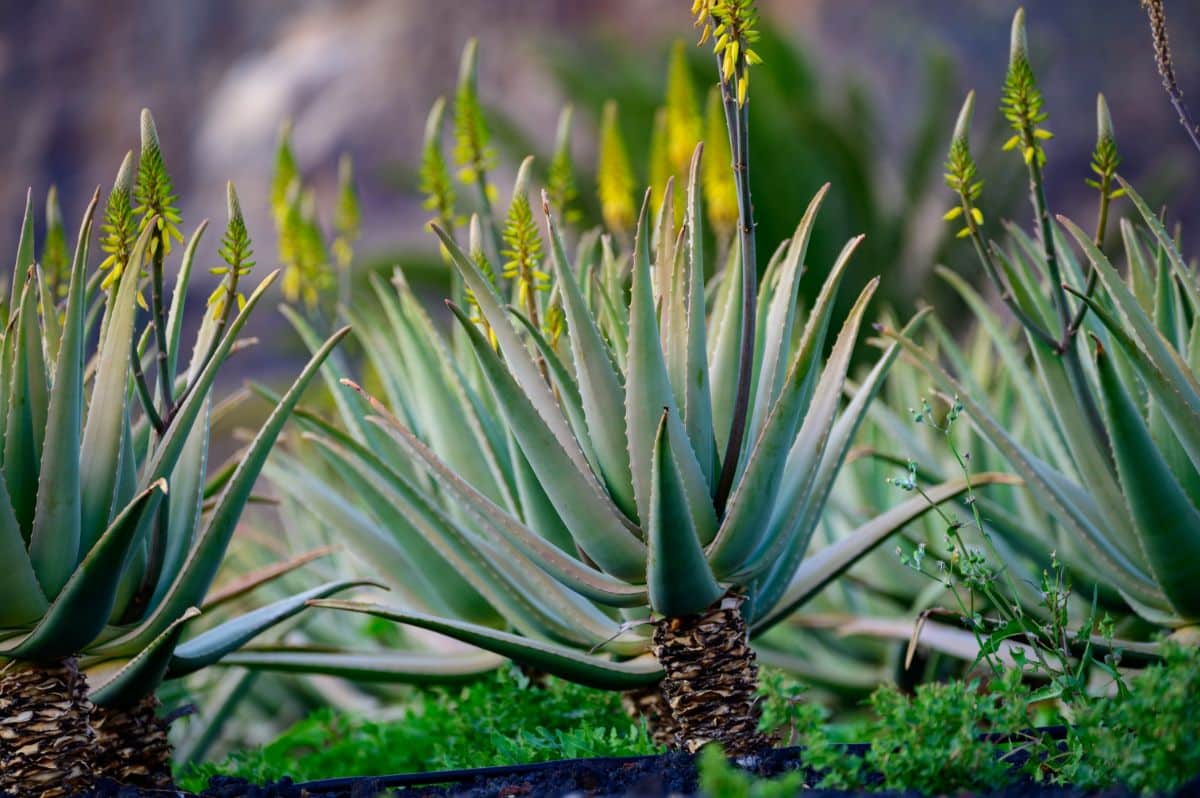
| Plant Name: | Aloe |
| Light Requirements: | Full sun |
| Water Requirements: | Low |
| Growing Zone: | Zones 9 to 11 |
| Special Features: | Drought tolerant; Some varieties edible |
Another resilient plant for xeriscaping, aloe is a living testament to nature's adaptability. Well suited for dry landscapes, aloe stores extra moisture in its thick and succulent leaves, which helps the plant survive drought and minimal rainfall. A low-maintenance gem in full sun spaces, aloe can even thrive in sandy soils with low nutrient contents.
Most growers are familiar with aloe vera, which is frequently used in beauty products, but there are many other aloe varieties to choose from, including the cape aloe, spiral aloe, and tiger aloe. Bringing both beauty and functionality to desert gardens, aloes pair beautifully with other xeriscape plants, but aloes are also attractive enough to be grown on their own. Whether you want to grow aloe for water savings or the soothing properties of its gel, aloe plants are essentials for xeriscapes, and growing them can make your low-water garden that much more sustainable!
6. Pink fairy duster (Calliandra eriophylla)

| Plant Name: | Pink fairy duster |
| Light Requirements: | Full sun |
| Water Requirements: | Low |
| Growing Zone: | Zones 8 to 11 |
| Special Features: | Drought tolerant; attracts pollinators |
Most plants for xeriscapes are either succulents or cacti, but if you’re craving something different, pink fairy duster plants may be the solution. These whimsical plants are known for their delicate, feathery foliage and powder puff blooms, which come in a vibrant pink color. And while these beauties may look delicate, they can handle the heat (and drought, too!), but they’re only hardy to zone 8.
Native to the southwestern United States and Mexico, pink fairy dusters are top choices for pollinator habitats and native plant gardens. Not only do hummingbirds adore fairy duster blooms, but bees can’t resist them either! At 2 to 3’ tall, pink fairy dusters make exceptional backdrop plants for mixed beds, and their slender branches and finely textured leaves will add a magical feel to your desert oasis.
7. Adam’s needle (Yucca filamentosa)
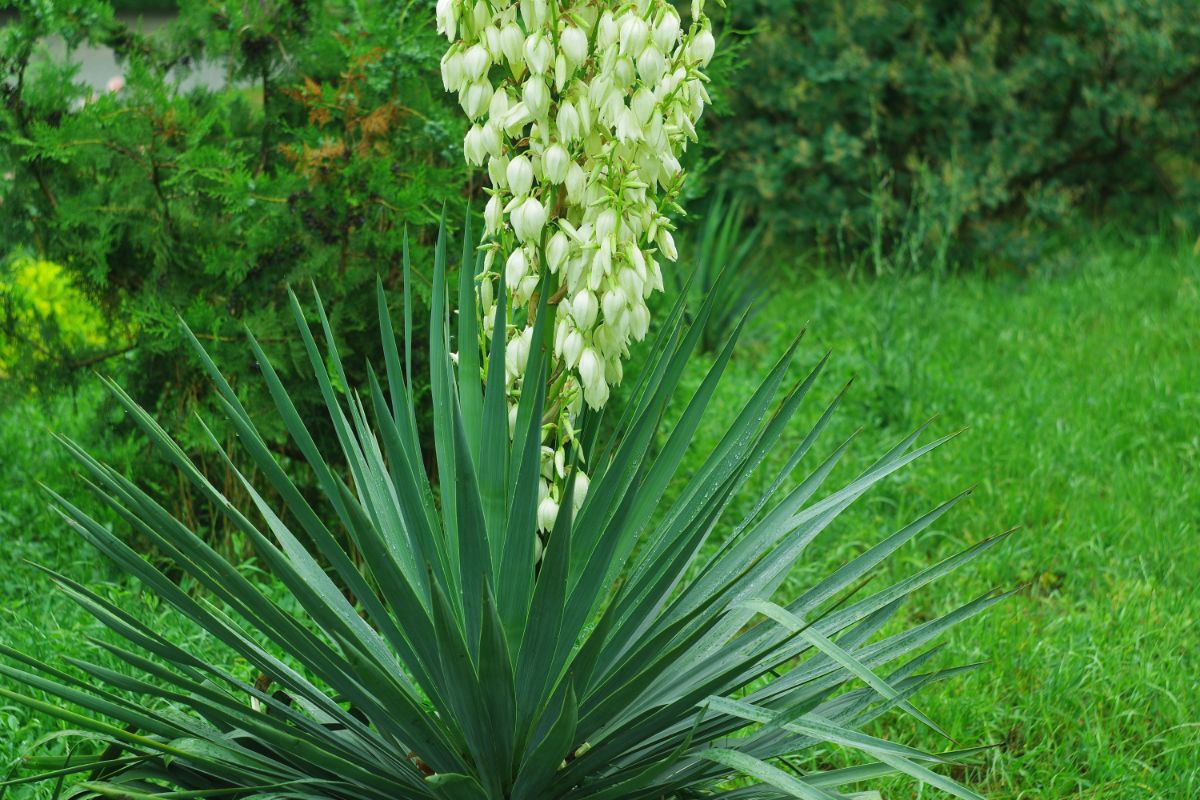
| Plant Name: | Adam's needle |
| Light Requirements: | Full sun |
| Water Requirements: | Moderate to low |
| Growing Zone: | Zones 4 to 10 |
| Special Features: | Drought tolerant; Strong silhouette |
Like the century plant, Adam’s needle plants have a bold silhouette that helps them to stand out in any landscape design. However, Adam’s needle is more cold-hardy than century plants, and it can overwinter in areas as cold as zone 4. But just because Adam’s needle can tolerate cold doesn’t mean that this plant isn’t well-suited for hot desert gardens too!
Another drought-tolerant species, Adam’s needle sports sword-shaped leaves that are edged in fine strings (hence the plant’s Latin name “filamentosa.”) But mature Adam’s needle plants can also produce spikes of creamy, bell-shaped flowers that lure pollinators in. With rugged charm and marvelous heat resistance, Adam’s needle will fit right into xeriscaped spaces or low-water gardens.
8. Peruvian apple cactus (Cereus repandus)

| Plant Name: | Peruvian apple cactus |
| Light Requirements: | Full sun |
| Water Requirements: | Low |
| Growing Zone: | Zones 9 to 11 |
| Special Features: | Drought tolerant; Edible fruit |
In the arid beauty of a xeriscape garden, delicate plants can fade away, but the Peruvian apple cactus is built to last. A slow-growing specimen plant, Peruvian apple cacti only grow about 2’ a year, but they can max out at around 30’ tall in garden beds. When kept in containers, these cacti will usually stay under 5’ in height, and they should be rotated often to keep them from leaning toward the light.
With a stout, ribbed stem in a rich green tone, Peruvian apple cacti have tons of desert charm, but they also produce showy flowers when mature. After blooming, this cactus species will yield a good-sized crop of edible fruit, which has a sweet flavor that’s reminiscent of apples. While Peruvian apple cacti can grow perennially in zones 9 to 11, they don’t tolerate cold well and will need to be overwintered indoors in pots in colder areas.
9. Black rose tree houseleek (Aeonium Arboreum 'Zwartkop')
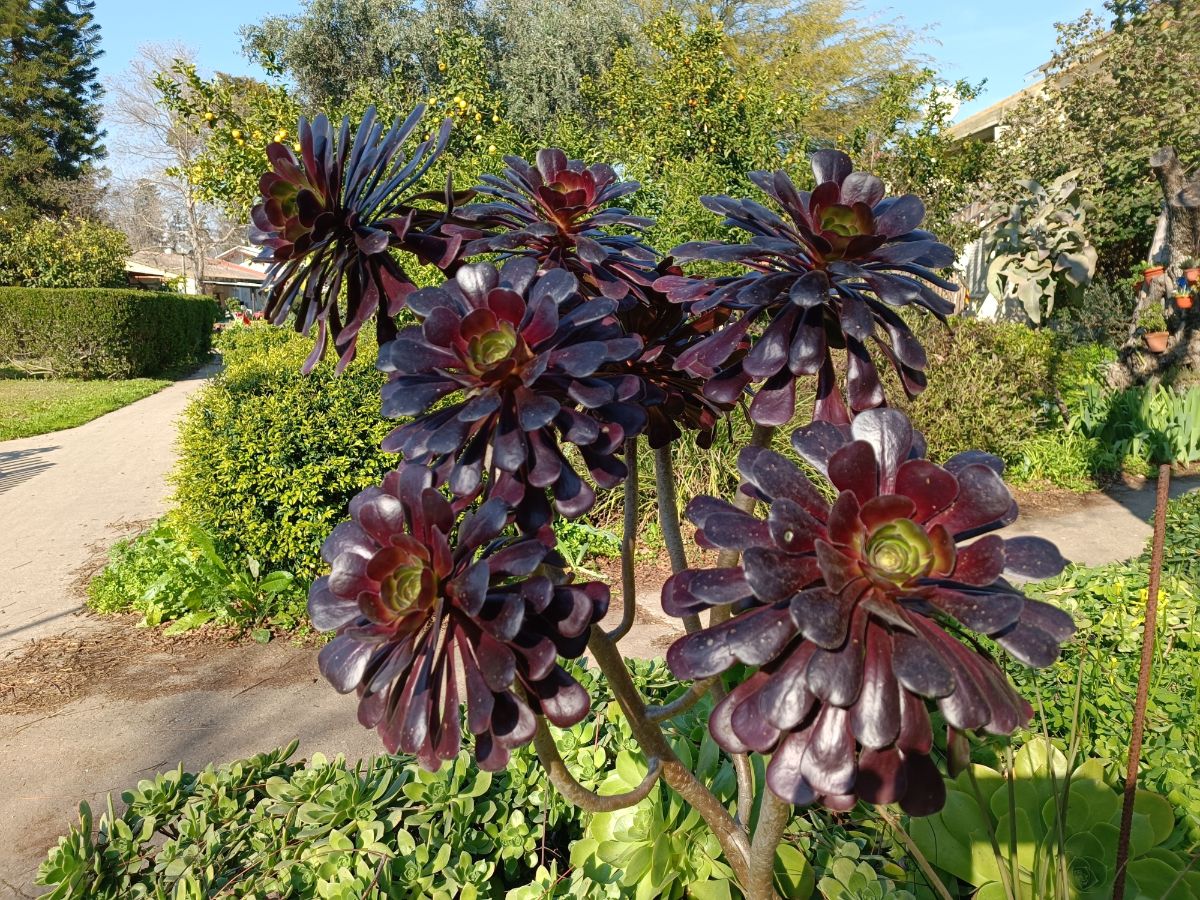
| Plant Name: | Black rose tree houseleek |
| Light Requirements: | Full sun to part shade |
| Water Requirements: | Low |
| Growing Zone: | Zones 9 to 11 |
| Special Features: | Drought tolerant; Uniquely colored leaves |
The black rose tree houseleek is a uniquely charming, shrub-like plant with elongated stems topped with a colorful rosette of leaves. In fact, this plant’s nickname ‘Zwartkop’ comes from the plant’s vivid coloration, which appears almost black in some lighting. However, upon closer inspection, garden visitors will notice that ‘Zwartkop’ leaves are tinged with a burgundy tone, which gives the plant a bit of dramatic flair!
Thriving in full sun, ‘Zwartkop’ is another low-water marvel that can usually get by on rainwater alone, although this plant does like a bit more moisture than some other succulent plants. An ideal choice for zones 9 to 11, ‘Zwartkop’ demands attention, and it can be used as a focal point amidst other low-water plants. Gardeners in cooler locations can also grow ‘Zwartkop,’ but the plant will need to be overwintered indoors.
10. Bitterroot (Lewisiaspp.)
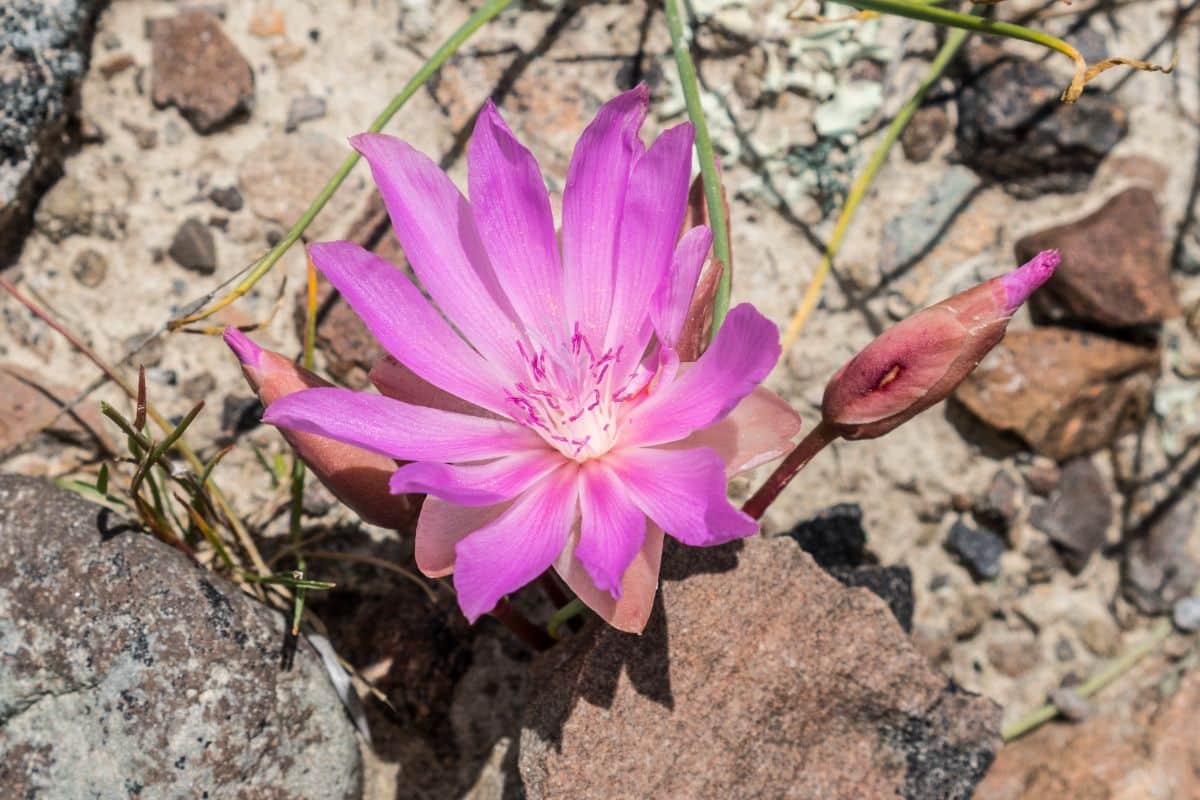
| Plant Name: | Bitterroot |
| Light Requirements: | Full sun to part shade |
| Water Requirements: | Low |
| Growing Zone: | Zones 5 to 9 |
| Special Features: | Drought tolerant; Colorful blooms |
Bitterroot is a low-growing perennial plant that can overwinter in zones 5 and up. Mature plants only grow to about 8” tall, and they are well-suited for growing towards the front of flower beds or as low-maintenance border plants. Once established, bitterroot is drought tolerant, but plants will grow even better with extra water.
Bitterroot is named for its bitter-tasting roots, which are edible but not very pleasant to eat unless cooked. These plants bloom in late spring to early summer, and flowers come in a range of hues, including white, pink, and lavender. After blooming, bitterroot will enter a state of dormancy, and watering should be reduced even further during this time.
11. Wax agave (Echeveria agavoides)
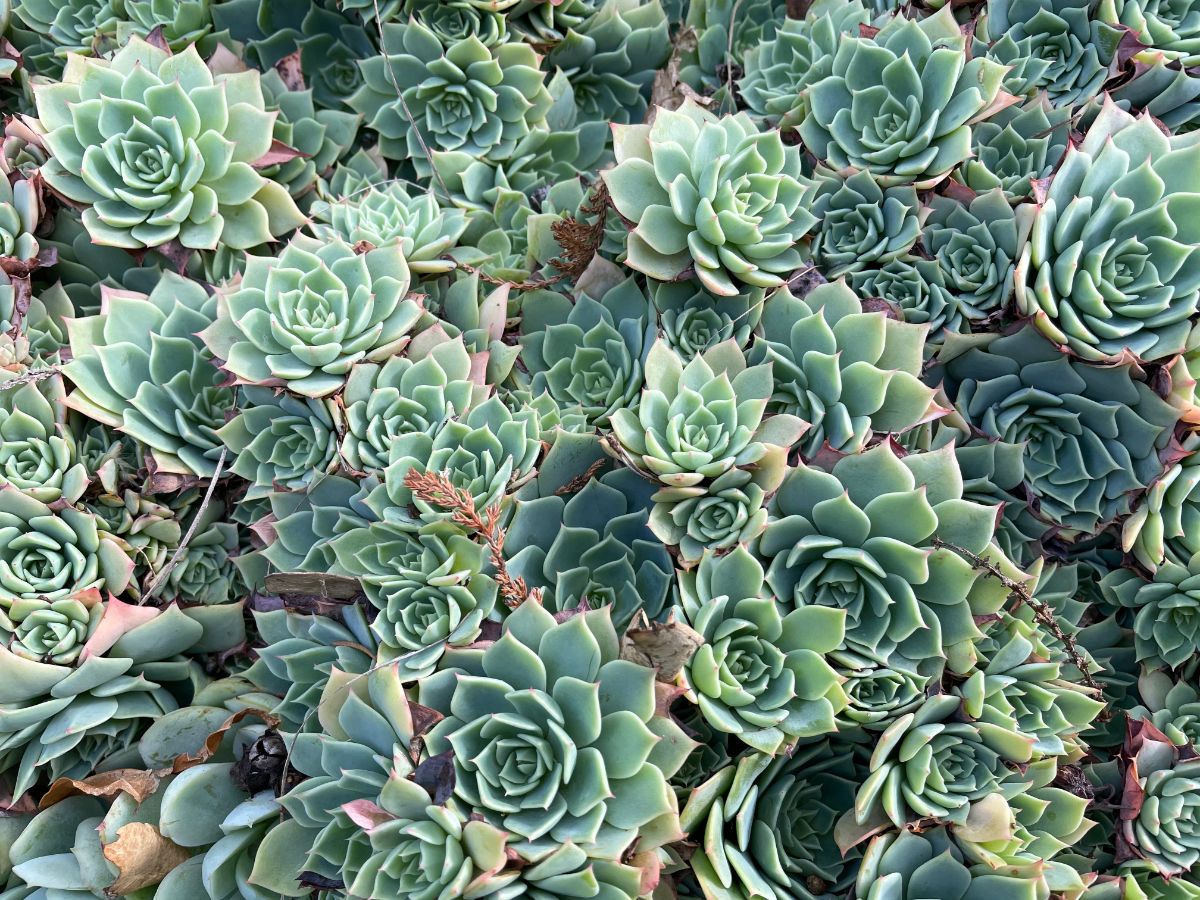
| Plant Name: | Wax agave |
| Light Requirements: | Full sun to part shade |
| Water Requirements: | Moderate to low |
| Growing Zone: | Zones 9 to 11 |
| Special Features: | Drought tolerant; Good for small spaces |
Wax agave’s name is a bit of a misnomer as this plant is actually an echeveria, not an agave. However, this plant’s pointed leaves increase its resemblance to agave plants, and, like agaves, this plant specimen is incredibly hardy in xeriscapes. Part of wax agave’s resilience comes from its fleshy leaves, which are coated in a waxy covering that helps lock in moisture levels and keeps the plant from drying out.
Wax agaves are short plants that can be kept in ornamental beds or containers. With pointed leaves in a rosette form, wax agaves provide plenty of visual interest, which is only accentuated by the plant’s bright green leaves and deep red leaf tips. Growing best in full sun to part shade, wax agaves prefer to be watered with the “soak and dry” method, which is commonly used on succulents and cacti alike.
12. Candelabra cactus (Euphorbia ingens)
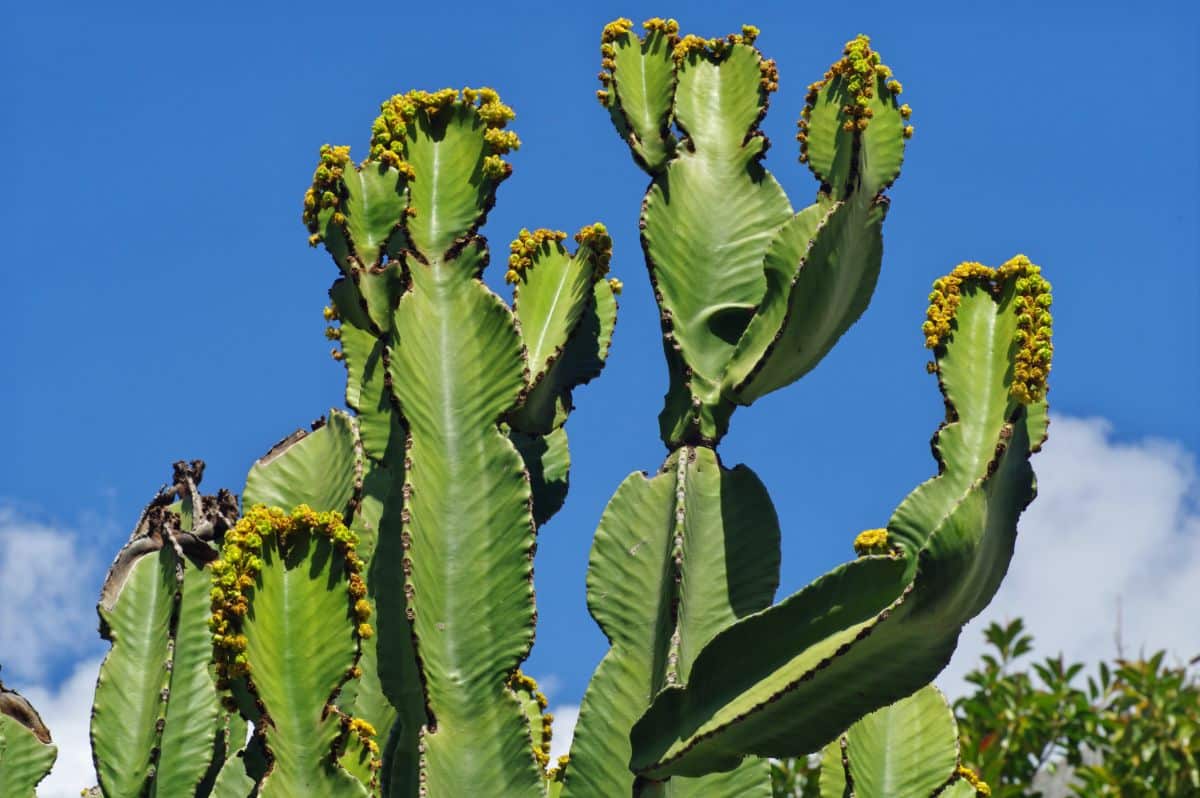
| Plant Name: | Candelabra cactus |
| Light Requirements: | Full sun |
| Water Requirements: | Low |
| Growing Zone: | Zones 10 to 11 |
| Special Features: | Drought tolerant; Strong silhouette |
Despite its name, candelabra cactus is actually a succulent, not a cactus at all, but that doesn’t mean it isn’t ideal for desert landscapes! In desert gardens, candelabra cacti add a casual feel with their long and sturdy arms that each grow into their own unique shapes. When mature, candelabra cacti can grow up to 30’ tall, and their strong lines will anchor garden beds and provide a backdrop to lower-growing desert plants.
While candelabra cacti can get quite large, they are slow growers, so you’ll need to be patient if you want to grow this stunner. Aside from its stately form, candelabra cacti also produce yellowish-green flowers that are attractive to pollinators of all sorts. But be wary; this plant does have lots of sharp spines, and it should be handled with care!
13. Curve leaf yucca (Yucca gloriosa var. tristis)
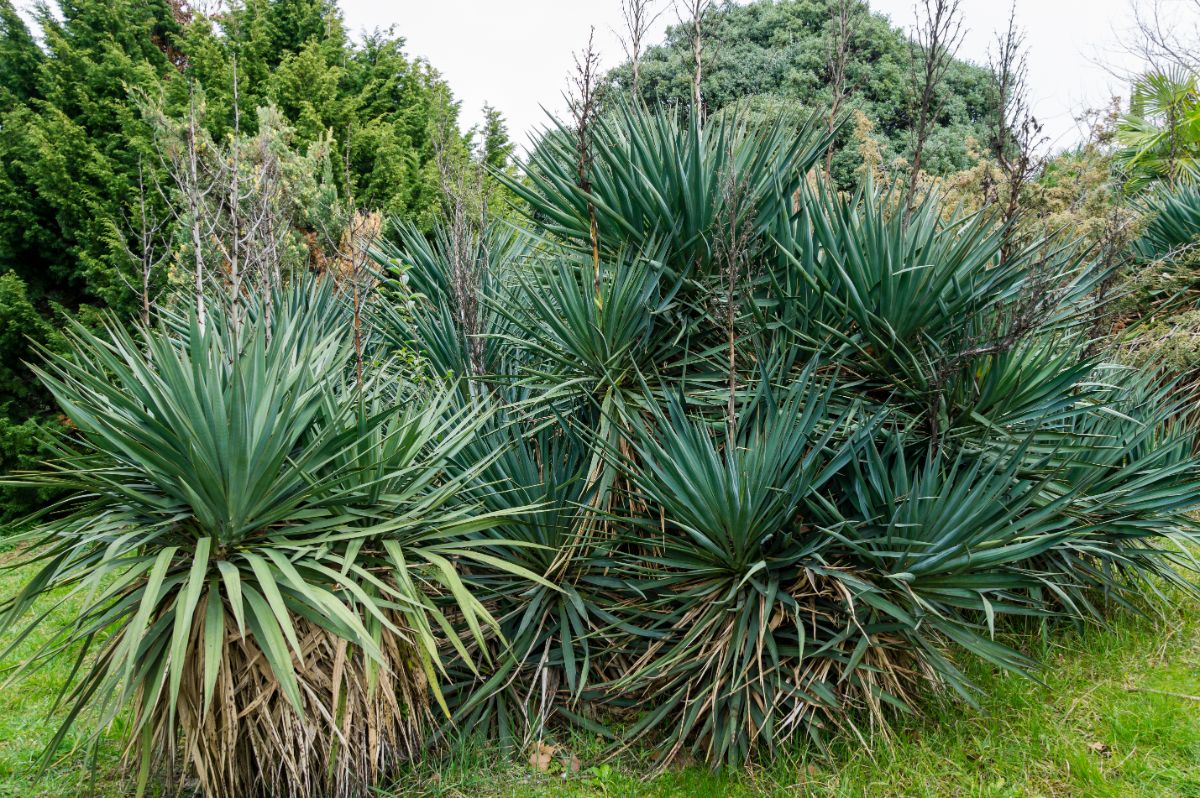
| Plant Name: | Curve leaf yucca |
| Light Requirements: | Full sun to part shade |
| Water Requirements: | Moderate to low |
| Growing Zone: | Zones 7 to 11 |
| Special Features: | Drought tolerant; Strong silhouette |
Prized for its dramatic, arching foliage and slender spikes of creamy-white flowers, the curve leaf yucca is native to the Americas, and it’s a close relative of agaves. Heat tolerant and drought resistant, the curve leaf yucca has all the charm of other yucca species, but its curled leaves aren’t as sharp, and they’re less likely to scratch! These plants also bloom from late spring to early summer, and their creamy white, bell-shaped flowers appear in clusters on tall spikes that can reach up to 5’ high.
Curve leaf yucca plants are best suited for full sun locations, but they should be planted in part shade in very hot locations. These plants should also be grown in well-draining soil, and, like other xeriscape specimens, the curve leaf yucca grows beautifully in rock gardens too. Typically, curve leaf yucca won’t require much pruning, but you can improve the look of your plant by snipping away dead leaves as needed.
14. Ice plants (Delosperma spp. or Lampranthusspp.)

| Plant Name: | Ice plant |
| Light Requirements: | Full sun |
| Water Requirements: | Low |
| Growing Zone: | Zones 6 to 10 |
| Special Features: | Drought tolerant; Colorful blooms |
Ice plants are less commonly grown additions in xeriscapes, but they can add a unique feel to your rock garden or low-water beds. Named for their hairy stems, which catch the light a bit like tiny ice crystals, ice plants produce dainty, daisy-like flowers that add something unexpected to desert landscapes. These plants also have succulent-type stems, which help the plant resist drought and thrive in minimal water situations.
There is a lot of variety in the ice plant family, and you can find low-growing ice plants as well as tall and shrubby cultivars. Smaller ice plants are ideal for growing along garden borders and walkways, but they can also be potted up in containers. For best growth, grow ice plants in sunny but sheltered gardens and water plants sparingly once they’re established.
15. Barrel cactus (Echinocactus grusonii)
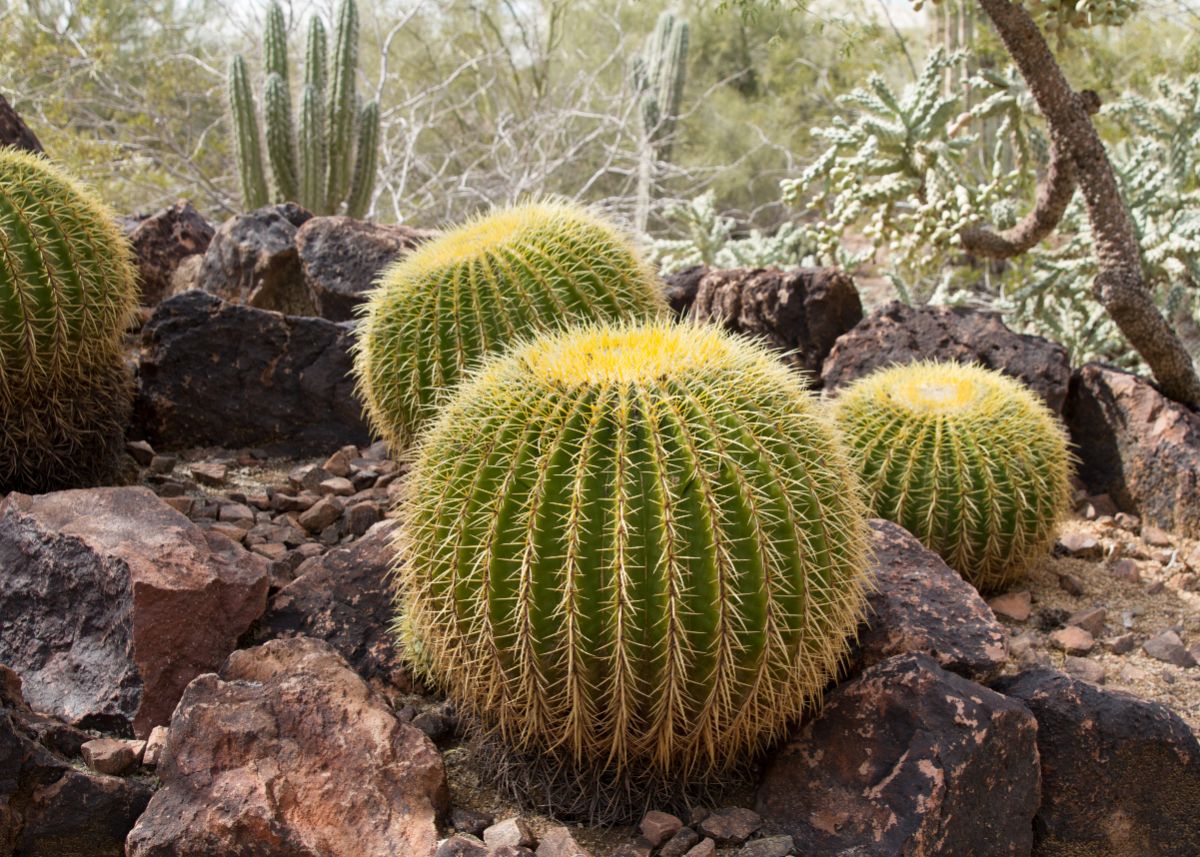
| Plant Name: | Barrel cactus |
| Light Requirements: | Full sun |
| Water Requirements: | Low |
| Growing Zone: | Zones 7 to 11 |
| Special Features: | Drought tolerant; Strong silhouette |
Barrel cacti are commonly grown indoors as houseplants, but they also make handsome additions to desert gardens. With a distinct, rounded form, barrel cacti look a bit like all-natural footstools. But be careful; you don’t want to sit down on these xeriscape plants because they’re covered in sharp spines!
Like most other cactus species, barrel cacti are built tough, and they are hardy in hot and arid places. These plants also adore the bright sun, and they can grow towards the light, so you’ll want to be sure to rotate potted specimens regularly to keep them straight. When cared for properly, barrel cacti typically grow between 2 and 4’ in height, but some plants can stretch up to 10’ tall!
16. Desert willow (Chilopsis linearis)
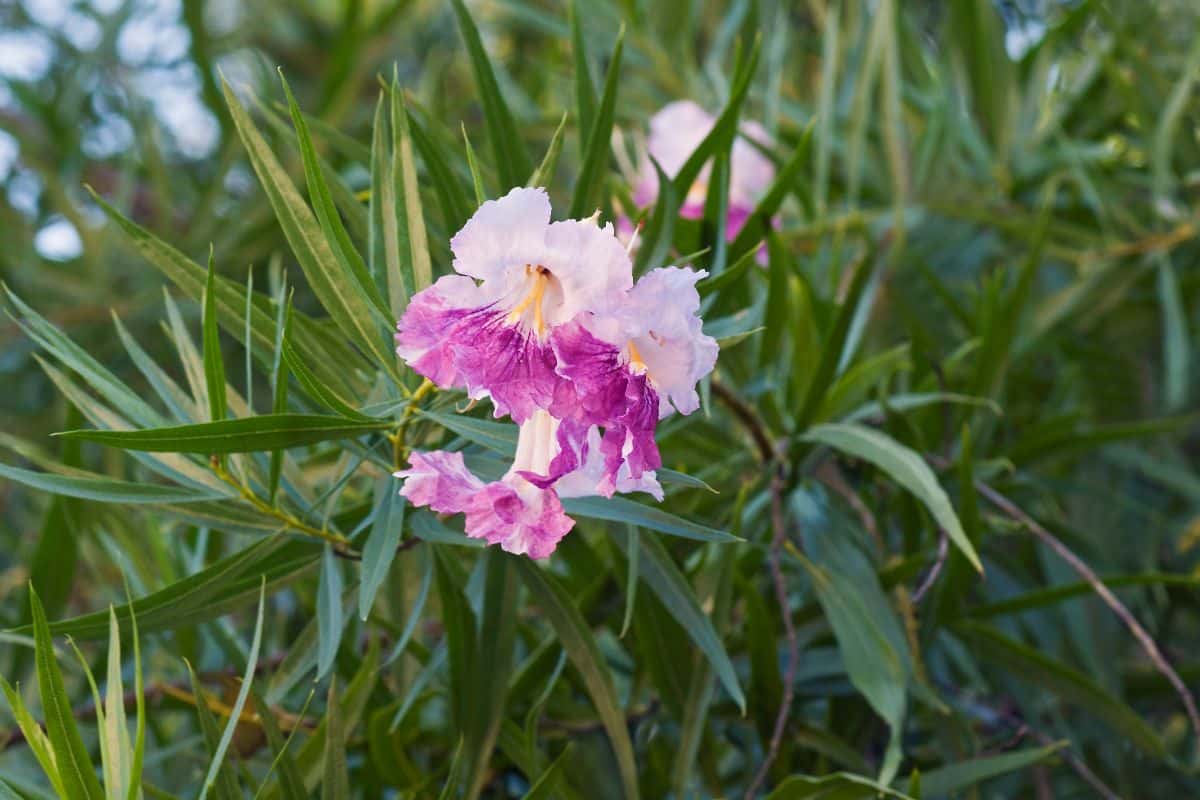
| Plant Name: | Desert willow |
| Light Requirements: | Full sun |
| Water Requirements: | Moderate to low |
| Growing Zone: | Zones 6 to 9 |
| Special Features: | Drought tolerant; Fragrant leaves |
Desert willow is an eye-catching species that you won’t find in every garden. With fragrant leaves and dark pink blooms, this ornamental plant has lots to recommend it. Plus, this plant has low moisture needs, so you know it will do just fine in a water-wise xeriscape!
Growing up to 18’ tall by as many feet wide, the desert willow can make a statement when grown on its own, or it can be combined with lower-growing plants for a more complex garden look. What’s more, desert willows are ideal for beginning gardeners because they’re so low maintenance, and they aren’t fussy about pruning either. These plants aren’t cold-hardy, though, and they won’t grow perennially in areas cooler than zone 6.
Frequently asked questions
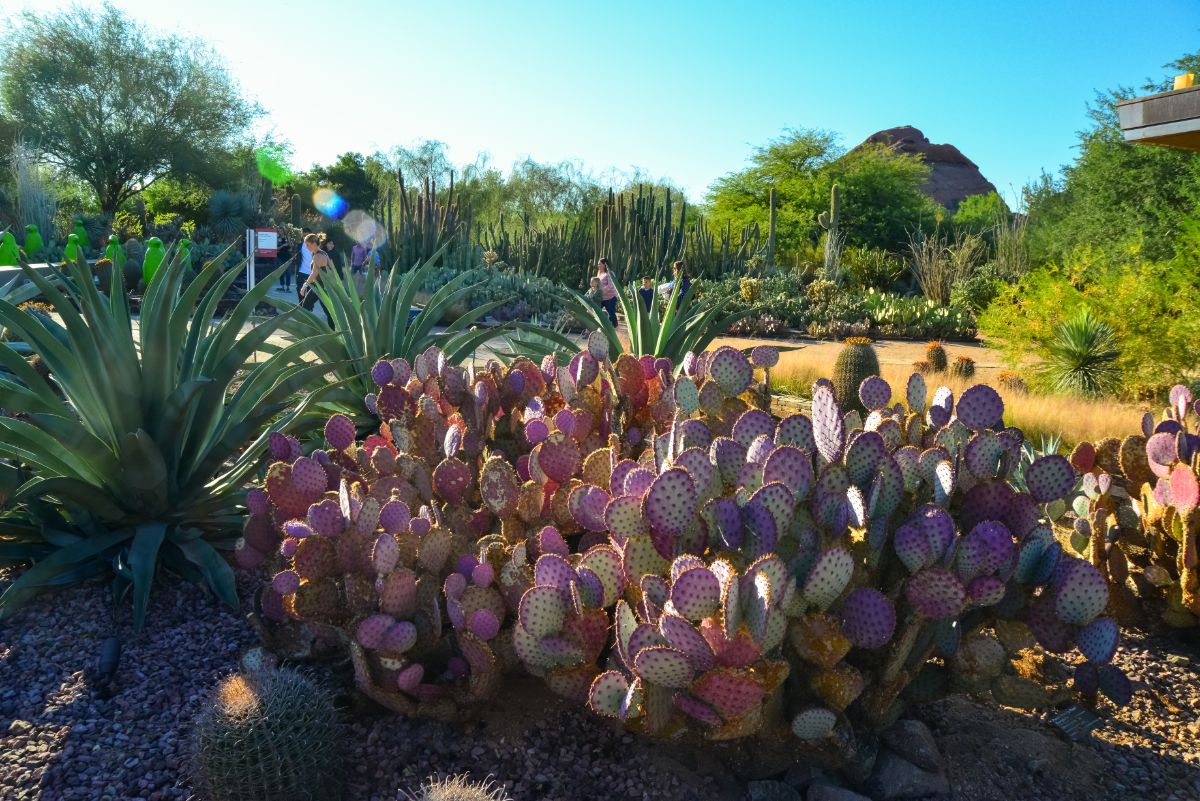
Xeriscapes are ideal for arid conditions, and they can help you cut down on watering and plant maintenance, but they do have a few drawbacks. Depending on the plants you’re working with, xeriscapes can be costly to install, and they can take some effort to create as well. Without lots of green plants, xeriscapes may not appeal to all potential home buyers, but water-wise home buyers may find homes with xeriscape designs irresistible!
Xeriscapes tend to have more elaborate landscape designs than zeroscapes, and they also contain more plants, although the plants grown in xeriscapes are drought tolerant and low maintenance. Zeroscapes may not have any plants at all, and they are primarily composed of rocks, gravel, and other hardscape elements.
One easy way to cut down on the costs when xeriscaping is to grow your plants from seed or cuttings. You can also make your garden more affordable by going slow and just adding a few new plants at a time.
Xeriscape plants are plants that have very low watering needs. Generally speaking, these plants tend to be slow growers, and they need minimal pruning, which helps the plants conserve moisture better.
Succulents and cacti are the most common plants grown in xeriscapes, but other low-water plants can also grow in these landscapes. Some less typical plant options for xeriscaping include desert willows and pink fairy dusters. Depending on your growing zone, you may also be able to keep woody-stemmed herbs, like lavender and rosemary, in desert gardens.
Low-water plants, like cacti and succulents, are perfect choices for desert gardens. Beyond that, you may also want to include hardscape elements in your design, such as ornamental rocks and rock walls, intriguing gravel arrangements, benches, statues, and stone walkways.
Summary

Finding plants that will grow in low-water areas can be a bit of a challenge. But with a little research and some flexibility, you can find an assortment of low-water plants that will grow in desert gardens and other areas with minimal rainfall. And once you have these plants in your garden, you’ll be awed by their low maintenance needs and eco-friendly nature -- as well as their austere yet undeniable beauty!
For more water-saving tips, check out our full guide on ways to conserve water in gardens. Or, if you’re on the hunt for more planting inspiration for your xeriscape, peruse our guides on the best drought-tolerant perennials and shrubs for arid climates.

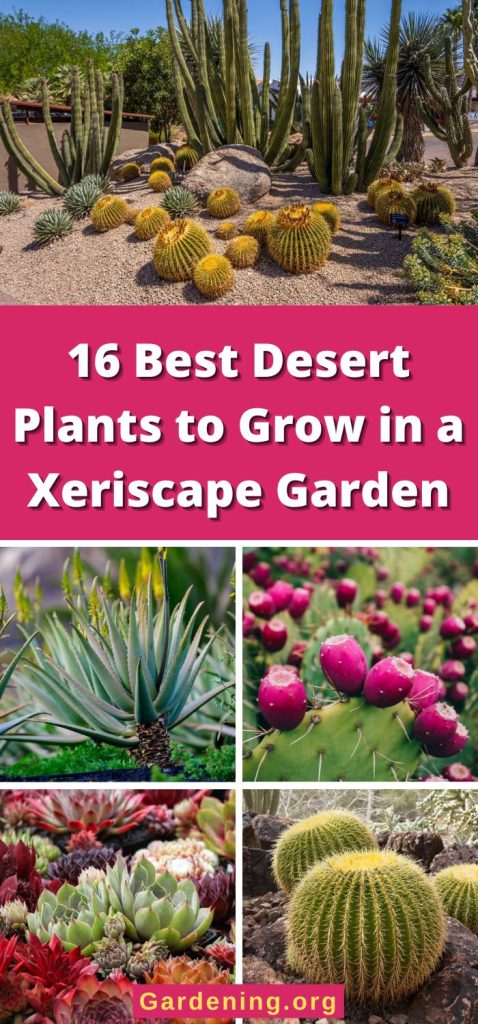
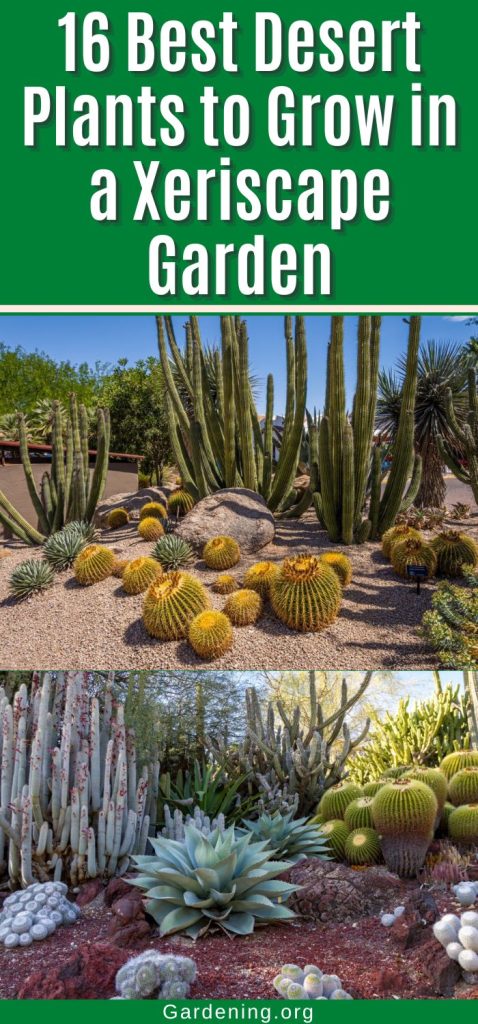
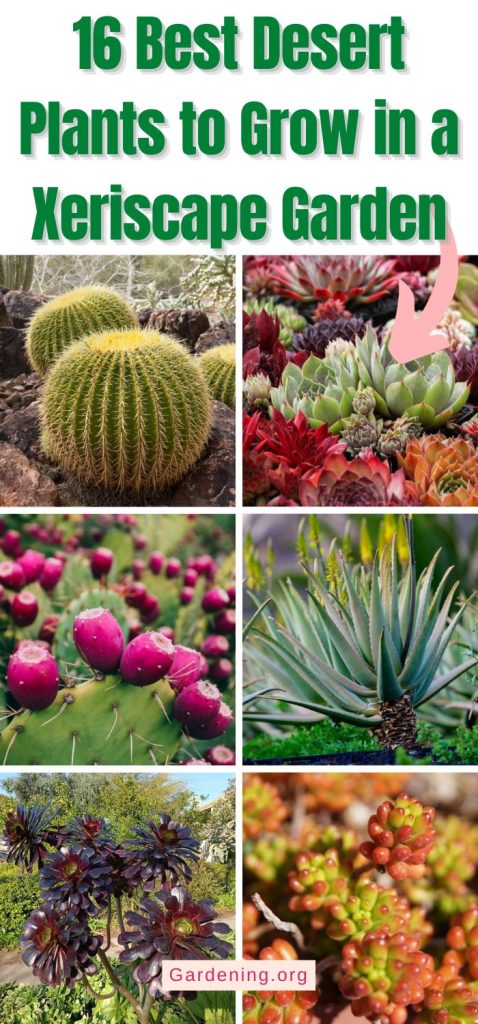
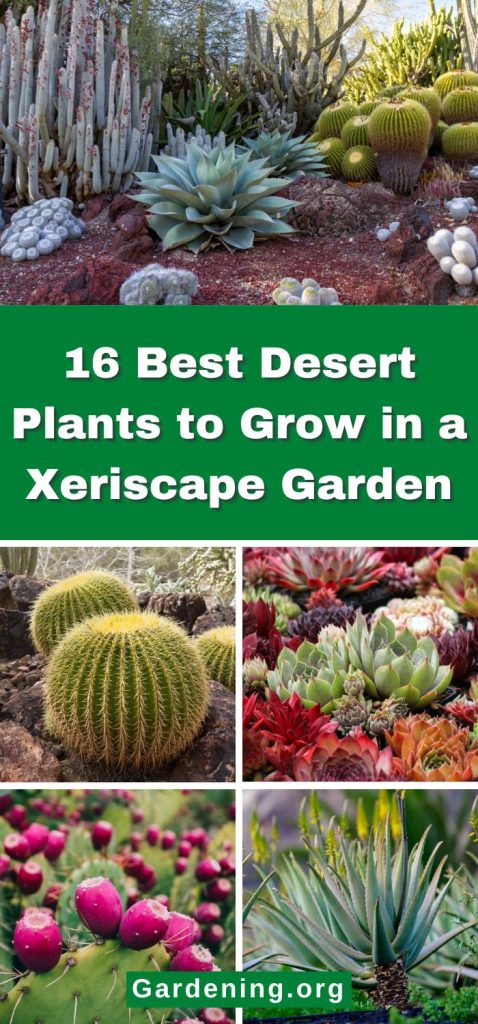
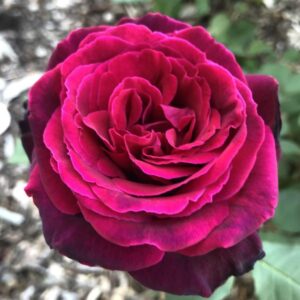
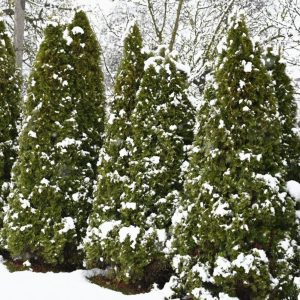


Leave a Reply